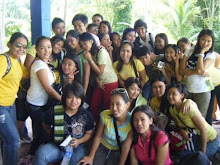- How does the photograph classify, is it a feature or news picture? If it will “save” for a month or two, it is probably a feature picture. If it synchronizes with the day’s news, it is a news picture.
- Is it forbidden matter such as lottery or raffle? Is it salacious or otherwise improper for public display?
- What elements give the picture news or feature value? How unusual is the news event that is pictured?
- Does the picture simply illustrate- or does it tells a story?
- Is it blurry, furred out of focus and not printable?
- How large a cut should be made of the picture? Are there parts that could and should be eliminated?
- What shall be its position and setting in the newspaper? On what page and at the top of what columns shall it be placed? What captions and texts does it require to show off its advantages?
Pointers in selecting out pictures:
- Photos should be cropped to eliminate unnecessary detail and to focus attention on the theme.
- A photo should not lie right next to a heavily-shaded ad.
- Multiple column photos as a rule be in the upper left hand corner.
- Crowded, posed photograph should be avoided.
- Retouch whenever necessary, radio-photos specially, but leave this technical detail to the staff artist.
- If you think a photo should be displayed two columns ask yourself if it wont look handsomer in three. Same goes for three.
- Unless very necessary don’t soften the impact of a photo with worked-in arrows, broken lines, super impositions or any kind of additional pointers not originally in the photo.
- Have your photos scaled correctly.
- If the dominant figure in a photo doesn’t face the page, or the story direct the engraving department to reverse the film.
- When making out orders for photos, be sure that caption goes with photograph.
- Allot space in your dummy for caption material.
- The back of the photo should carry pertinent legend: width and height or depth of cut, slug or label, and page.
- A final check before tossing the stuff in the basket may save you a lot of trouble, too.
- Don’t forget the caption lead-in or the display line or whatever style your paper has adopted.


No comments:
Post a Comment